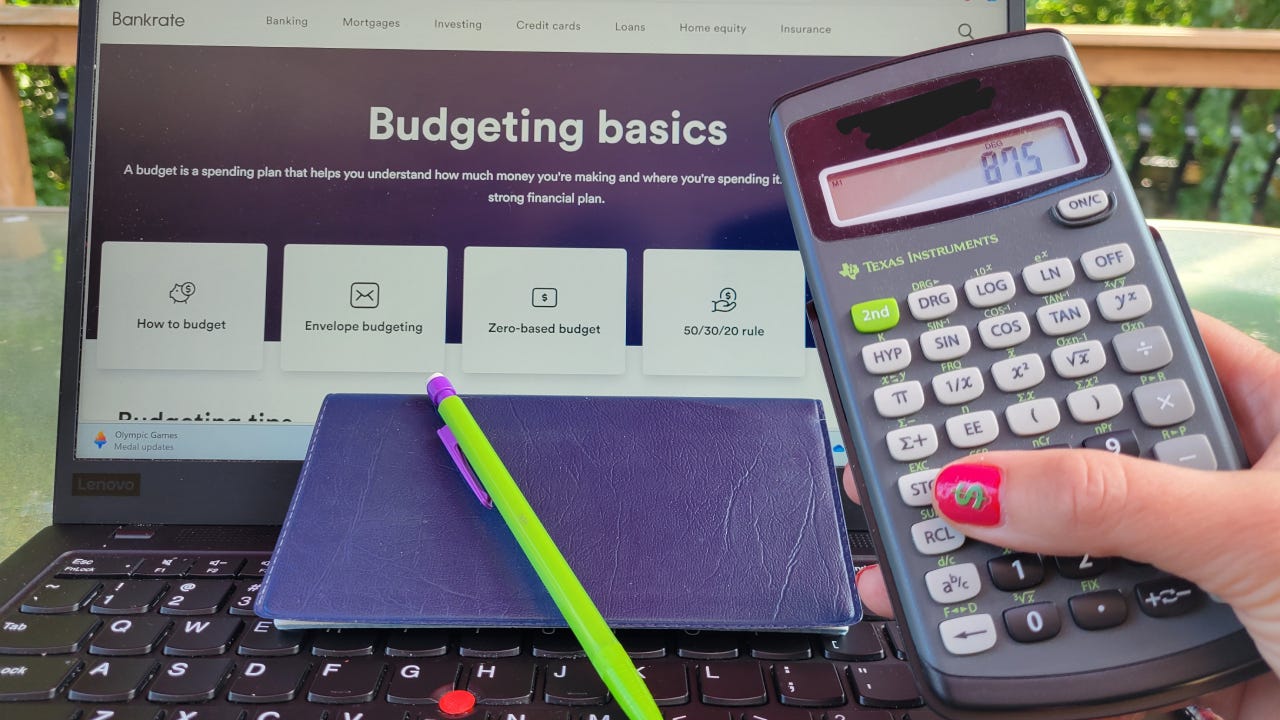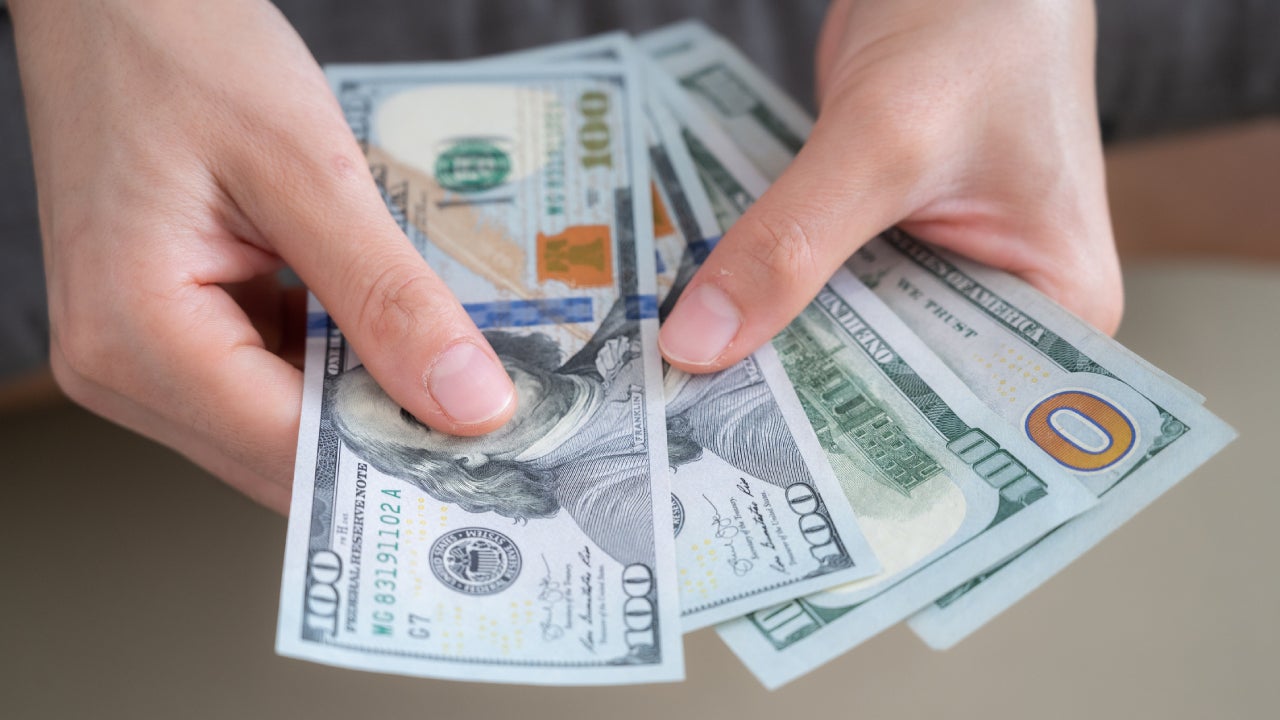5 steps to a financial glow-up

A financial glow-up is essentially a money makeover. It’s taking a thorough look at your finances and following up with actions to meet your money goals. “Glow-up” may be a trendy term, but taking stock of one’s finances is an age-old practice — and one that could prove especially useful right now, with the recent stock market turmoil and cooling job market.
Here are the five simple steps I took for my financial glow-up, along with what I learned and some tips for anyone looking for ways to get started.
1. I sized up my recent spending
First off, I looked through my debit and credit card statements from the past three months. I took my time with this task, allowing myself to learn about my recent spending habits and how much money I’m devoting to various categories each month.
Speaking of categories, my bank automatically assigns one to each of my transactions, which is helpful in tallying spending amounts on groceries, gas and so on. It also let me download these transactions to a spreadsheet, which made it super easy to add up my spending by category.
One thing I learned
I need to reign in my coffee shop spending. I spend around $40 a month at coffee shops. Considering I can make coffee at home for pennies on the dollar, I can really save by eliminating this expensive habit. While simply cutting back could be a good start, I’m feeling ambitious: I plan to completely forgo these coffee runs — at least for now — and put the money to good use elsewhere.
My action plan
I’ll divert the money to a travel fund. I know I’ll thank myself in the future for this, and I’m excited about this simple change that adds more money to my savings account. This account offers savings buckets, which are customizable categories — so I’ve created one for travel and will insert money there from each paycheck.
Ways you can improve your spending habits
Look through your own recent spending and find ways to tighten it up. Examples include:
- Cancel unused memberships and subscriptions.
- Prepare more of your meals at home.
- Shop around for cheaper rates on auto, homeowners or renters insurance.
- If you’re a reader, borrow more of your books from your library. (This also solves the problem of what to do with books after you’re done with them.)
- Keep your clothes closet organized, so you’re aware of the contents and don’t buy additional items you don’t truly need.
- Watch out for impulse spending, and take steps to reduce this.
2. I gave my budget a fresh start
I’ve spent years budgeting with either a spreadsheet or pencil and paper. This has always worked well; however, like with any habit, it can feel stale over time. I figured a fresh start with budgeting will help me save more money — and dare I say, it might even be a little fun?
So, I looked through Bankrate’s list of best budgeting apps, and decided to get a free 34-day trial of You Need a Budget (YNAB). In getting started, I entered my monthly spending categories and income. It then helped me to assign a job to each of my dollars, which is similar in some ways to cash stuffing. This spending plan will help ensure I have the amounts needed for each of my upcoming bills and expenses.
One thing I learned
I want better control over my non-essential spending, such as buying books. After looking over my spending history in Step 1 and then allocating amounts for expenses in YNAB, I want a better handle on my spending in some categories. In particular, I’ve decided to decrease the amount I spend on books each month (with no negative impact on my reading habit).
My action plan
I’ll take advantage of free (or almost free) books. Now that I’ve set a spending limit for books in the YNAB app, I’ll keep myself in check by using the library (and its ebook app) more often. I also pay a nominal fee for a Kindle Unlimited subscription, so I plan to take advantage of more of the books available there. If you’re already an Amazon Prime member, you also have access to free ebooks, audiobooks and magazines.
Other non-essentials I’m finding ways to cut back on include dining out and streaming TV subscriptions, as well as the coffee shop visits I’ve previously mentioned.
Ways you can freshen up (or start) your budget
Find a budget method that works best for you. Feel free to try a brand-new method, like I did, even if you’ve been doing well enough with a certain method for a while. Trying this may help you find new and creative ways to manage your money. Budgeting options include:
- Pencil and paper: This tangible, old-fashioned method works well for many people, and I’ve often resorted to it over the years. Keep a calculator handy — and you’ll probably want to make some initial changes, so a pencil works better than a pen.
- A spreadsheet: The beauty of a spreadsheet is you can set up formulas to do calculations for you. It’s also easy to adjust dollar amounts, as needed.
- A budgeting app: If you’ve never tried this, you may end up liking it more than expected. I sure did, and it’s refreshing to have calculations done automatically, not to mention receiving handy money management alerts.
3. I re-evaluated my high-yield savings account
Lately, rates on many deposit accounts have been edging lower as banks anticipate a possible September Federal Reserve rate cut. So I wanted to make sure my savings account is still earning a competitive annual percentage yield (APY). I also decided to compare other perks the account provides me with those offered by other online banks.
To do this, I logged onto my bank and reviewed my account’s APY and features. I pulled up Bankrate’s list of best high-yield savings accounts to view the rates and also visit the websites of those banks to see what they have to offer.
What I learned
My APY is competitive, although not top-notch. First off, my money is earning 4.20 percent APY, which is slightly lower than the top-earning savings accounts. Is that enough to make me switch banks? Well, it depends on the other benefits my account gives me as well as my overall satisfaction with the bank.
I value the money management tools my bank offers. As I’ve mentioned, the account allows me to segment portions of my savings into categories. This helps me save for emergencies, travel, gifts and other goals without having to use multiple accounts.
Some banks pay higher APYs but lack other key offerings. When looking at top-earning savings accounts from other banks, I found one requires an extremely high minimum opening deposit. Some others don’t have the robust money management tools my bank provides for my savings and checking accounts.
My action plan
I’ll keep my current bank and use more of its tools to grow my savings. My high-yield savings account doesn’t earn the top APY, yet it offers some valuable money management tools. So I’ll stay with my current account and take advantage of additional offerings I haven’t tried yet. One of these is rounding up my debit card purchases to the nearest dollar and transferring the money to savings.
Ways you can evaluate your savings account
When comparing your savings account with others, important factors to consider may include:
- APY: Currently, yields on many savings accounts are outpacing the rate of inflation. Going with a high-yield savings account means you’re not leaving interest on the table by settling for low rates.
- Money management tools: If you want help in growing your savings, look for an account with features such as savings buckets and easy transfers from checking to savings.
- ATM access: If you want easy access to your cash, consider a savings account that provides an ATM card (not all of them do) and that offers plentiful access to ATMs.
- No monthly maintenance fees: Don’t let such fees eat into your balance. It’s easy to find an online savings account that doesn’t charge them.
4. I increased my Roth IRA contribution
To me, the beauty of my Roth IRA account is I’ve already paid taxes on the money, so one day I’ll be able to withdraw the money tax-free. As such, I decided to increase the amount I’m contributing regularly to this investment.
What I learned
I could easily find ways to contribute more each month. In Steps 1 and 2 above, I took a close look at my spending and allocated all of my monthly income to different purposes. In changing my spending habits to free up some money, I can actually increase my monthly Roth IRA contribution by 50 percent.
My action plan
I used Bankrate’s handy Roth IRA calculator to see how much of an estimated impact such an increase in contributions can make. I liked what I saw, so I decided I’ll start increasing the amount I transfer to the account by 50 percent every month.
Ways you can increase your retirement savings
- Find areas in your budget to divert more funds to a Roth IRA. Lowering your discretionary spending can help free up some money for this.
- If you’re putting money in a 401(k), take advantage of any employer match. For instance, say your employer matches 50 percent of your contribution up to the first 6 percent of your pay. If you don’t contribute enough to receive the full match, you’re losing out on what experts often refer to as “free money.”
5. I found ways to boost my financial literacy
Who couldn’t use some helpful, trusted advice on ways to improve their money management? Several months back, I wrote an article on ways to boost your money IQ. I recently gave that article a thorough re-read, looking for ways to ensure I’m getting up-to-date financial news and insight.
What I learned
I get a lot of my financial news online through websites, blogs and newsletters. However, even though I’m an avid reader, I realize I don’t read enough books about money management.
While we live in a world of sound bites, I don’t want to let myself lose out on a better understanding of complex topics (such as investing) that could be gained from a good book.
My action plan
I’m going to start by reading “The Little Book of Common Sense Investing” by John C. Bogle. The book sets out to provide simple strategies for building long-term wealth. Depending on what I learn, I might share it in a book review.
Ways you can boost your financial literacy
- Podcasts: Listening to money-related podcasts can be a convenient way to learn quite a bit, and you can easily fit these in when cooking, driving, etc. An example is Your Money Briefing from The Wall Street Journal.
- Newsletters: Having a newsletter come to your in-box each day is an effortless way to keep up with the news. An example is Morning Brew.
- Social media: YouTube and Instagram can be useful places to get timely financial news and insight. For instance, money coach Chloé Daniels posts videos on her Quick Money Tips Instagram page about money management and investing.
- Books: Taking the time to read a good book on personal finance can leave you better equipped to navigate your money management. An example is “The Psychology of Money” by Morgan Housel, which delves into what the author believes are keys for a money-saving mindset and how people’s personal beliefs can be barriers to financial success.
Bottom line
Now that my financial glow-up is complete, I feel it was worth the time and effort. The insight I gained has helped me increase my savings for goals such as travel and retirement. What’s more, my new budgeting method has me feeling refreshed and excited about finding more ways to save.
In all, the benefits of doing this type of makeover include the peace of mind that you’re staying on top of your finances, living within your means and saving toward your goals.
Why we ask for feedback Your feedback helps us improve our content and services. It takes less than a minute to complete.
Your responses are anonymous and will only be used for improving our website.






